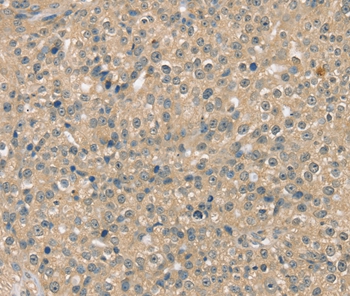
The image on the left is immunohistochemistry of paraffin-embedded Human breast cancer tissue using CSB-PA194569(SMAGP Antibody) at dilution 1/40, on the right is treated with synthetic peptide. (Original magnification: x200)
SMAGP Antibody
CSB-PA194569
ApplicationsELISA, ImmunoHistoChemistry
Product group Antibodies
ReactivityHuman, Mouse, Rat
TargetSMAGP
Overview
- SupplierCusabio
- Product NameSMAGP Antibody
- Delivery Days Customer20
- ApplicationsELISA, ImmunoHistoChemistry
- CertificationResearch Use Only
- ClonalityPolyclonal
- ConjugateUnconjugated
- Gene ID57228
- Target nameSMAGP
- Target descriptionsmall cell adhesion glycoprotein
- Target synonymshSMAGP, small cell adhesion glycoprotein, small cell transmembrane and glycosylated protein, small trans-membrane and glycosylated protein, small transmembrane and glycosylated protein
- HostRabbit
- IsotypeIgG
- Protein IDQ0VAQ4
- Protein NameSmall cell adhesion glycoprotein
- Scientific DescriptionSMAGP (small transmembrane and glycosylated protein) is a 97 amino acid single-pass type III membrane protein that localizes to the membrane of cytoplasmic vesicles. Existing as a murine-specific protein, SMAGP is thought to play a role in epithelial cell-cell contacts and, via its ability to control cell adhesion, may be involved in tumor formation, as well as overall tumor invasiveness and metastasis. SMAGP is subject to post-translational O-glycosylation which is thought to be modified with sialic acid residues. The gene encoding SMAGP maps to murine chromosome 15.
- ReactivityHuman, Mouse, Rat
- Storage Instruction-20°C or -80°C
- UNSPSC41116161





